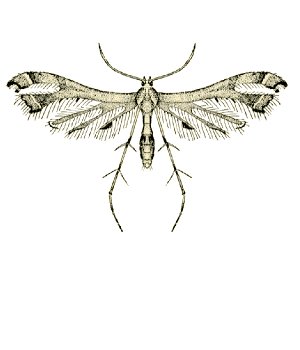Lantana plume moth facts for kids
Quick facts for kids Lantana plume moth |
|
|---|---|
 |
|
| Scientific classification | |
| Synonyms | |
|
The lantana plume moth (scientific name: Lantanophaga pusillidactyla) is a small moth known for its unique feathery wings. It belongs to a family of moths called Pterophoridae. This moth is originally from places like the southern United States, Mexico, the Caribbean, and South America.
Contents
Where the Lantana Plume Moth Lives
This little moth has traveled far! It was accidentally brought to Australia in 1936. Now, you can find it along the coast from Sydney to Cairns. People also intentionally introduced it to Hawaii in 1902, Pohnpei in 1948, and Palau in 1960. This was done to help control certain plants, a process called biological control.
Since then, it has spread to many islands in the Mariana and Caroline Islands. It lives wherever its favorite host plants grow. You can also find this moth in many other countries around the world. These include places in Africa like Cape Verde, Republic of the Congo, Democratic Republic of the Congo, Ivory Coast, Réunion, South Africa, Madagascar, Mauritius, Nigeria, Seychelles, Swaziland, and Tanzania. It also lives in Zambia, Israel, Morocco, India, Indonesia (Java), New Guinea, and Sri Lanka.
What the Lantana Plume Moth Looks Like
The lantana plume moth is quite small. When its wings are spread out, they measure about 11 to 14 millimeters across. That's roughly the length of your fingernail!
Life Cycle and What They Eat
Adult lantana plume moths enjoy feeding on the nectar from flowers. After mating, the female moths lay their tiny eggs right inside the flower heads of certain plants.
Larvae and Their Diet
The larvae, which are the caterpillar stage of the moth, have a specific diet. They mostly feed on different types of Lantana plants. Some of their favorite Lantana species include Lantana camara, Lantana montevidensis, Lantana hispida, Lantana peduncularis, Lantana indica, and Lantana involucrata.
They also eat other plants like Lippia alba, Phyla nodiflora, Phyla lanceolata, Caperonia palustris, Mentha species, and Utricularia species.
How Larvae Feed
These larvae are quite clever in how they eat. They feed from inside the flowers. Sometimes, they even tunnel around the base of the flower, munching on the plant's tissues. They usually feed for about seven to ten days.
Pupation and Development
After they've eaten enough, the larvae change into pupae. This happens right within the flower clusters where they've been feeding. The entire process, from an egg hatching to an adult moth emerging, takes about fourteen days. This quick development means many generations of moths can grow in a single year!

